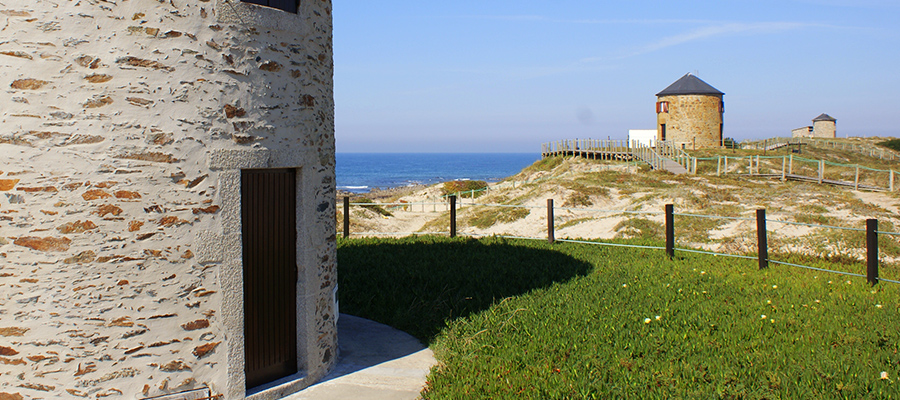Apúlia land of Gulfweed
In Apúlia, in addition to salt and fish, the exploitation of gulfweed was one of the agricultural and maritime activities with the highest expression.
Apúlia beach is now primarily known as a summer resort. However, the bay, given its good natural conditions, has been used since the Roman presence in the Peninsula as a point of loading of goods. When the bathing season entered in people’s everyday habits, Apulia beach gained fame by possessing high levels of iodine. Currently, due to the bay's excellence, Apúlia beach continues to be a holiday favourite turned towards the Atlantic.

The windmills of this beach is one of the reasons of interest. They are built in granite and schist with a round and conical shape in order to make the most out of the wind available. These mills have lost their original function and are now used as summer houses.

In Apúlia, in addition to salt and fish, the exploitation of gulfweed was one of the agricultural and maritime activities with the highest expression. A testimony of a time when the gathering of this product was important work are the huts, directly set on the dune, and where the tools of the gulfweed gathering were kept. The gulfweed collected from June until the end of the year, and dried in the sun, was employed as an organic fertilizer of the lands.

In terms of relevant religious buildings, stands the Parish Church, from the end of the 17th century.
